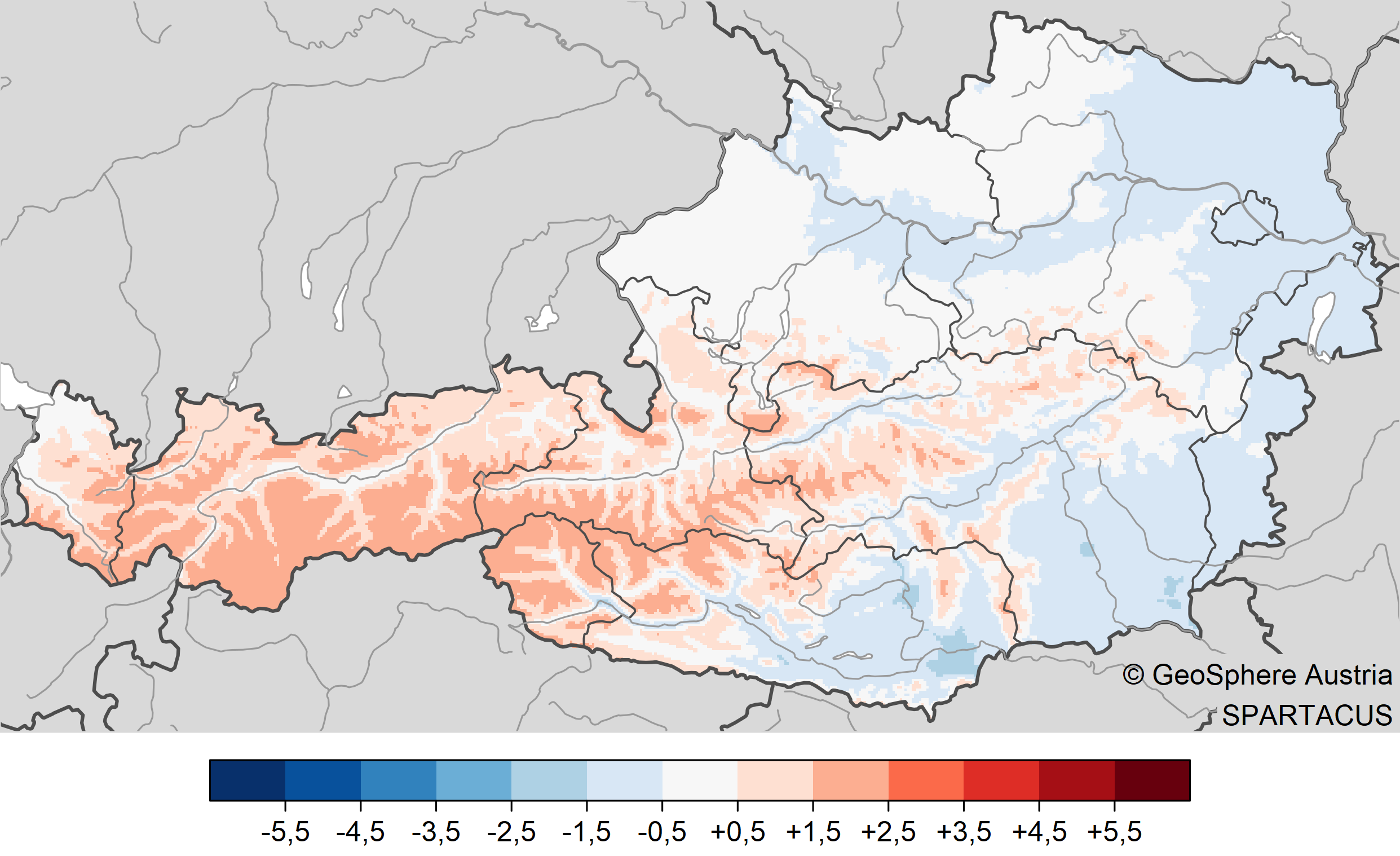November 2024 dry, often sunny and very mild in the mountains
November 2024 brought many high-pressure weather conditions, especially in the first half of the month, and was therefore very dry. "In the Austria-wide evaluation, there was 71 per cent less precipitation than in an average November," says climatologist Alexander Orlik from GeoSphere Austria, "it was the driest November since 2020 and one of the ten driest November in the 167-year precipitation measurement series."
In addition, the lakes of cold air typical of high-pressure situations in autumn caused large differences in temperatures. "Compared to an average November in the 1991-2020 climate period, November 2024 was 0.7 degrees too cool in Austria's lowlands and 1.6 degrees too warm in the mountains," says climatologist Orlik, "which puts the lowlands in 88th place in the series of the warmest November in the 258-year measurement history and the mountains in 17th place in the 174-year mountain measurement series."
Compared to the 1961-1990 climate period, November 2024 was 0.5 degrees above average in the lowlands and 2.6 degrees above average in the mountains.
On 1 November, some GeoSphere Austria mountain stations set a new record for the highest November temperature:
At the Sonnblick (S, 3109 m above sea level) with 7.1 degrees (measurements here since 1886), at the Rudolfshütte (S, 2317 m) with 13.0 degrees (measurements here since 1962), at the Brunnenkogel (T, 3437 m) with 9.0 degrees (measurements here since 2003). On the Villacher Alpe (K, 2117 m), the value of 12.8 degrees was exactly the same as the previous record from 1992 (measurements here since 1921).
The frequent high-pressure weather conditions also made for a very sunny November in most of Austria. In the Austria-wide evaluation, the number of hours of sunshine was 39 per cent above average, which is the highest value in a November since 2015.
In some regions, however, the fog patches typical of high-pressure weather in autumn were very persistent: from Flachgau across large parts of Upper Austria to the Mostviertel, the number of hours of sunshine in November 2024 was around 10 to 30 per cent below average.
The combination of low precipitation and mostly high temperatures resulted in fewer days with snow cover and lower amounts of fresh snow in most of Austria than in an average November. For example, the GeoSphere Austria measuring station in Ramsau am Dachstein (ST, 1207 metres above sea level) recorded 23 centimetres of fresh snow (sum of the daily amount of fresh snow). The average here is 51 centimetres. In St. Jakob im Defereggental (T, 1383 m) there was 18 centimetres of fresh snow, the average is 43 centimetres.
Short but heavy spells of winter brought temporary snow down to very low altitudes, which in some cases even resulted in above-average monthly totals. Feldkirch (V), for example, recorded 17 centimetres of fresh snow last November, compared to an average of 6 centimetres. In Klagenfurt (K), there were 9 centimetres of fresh snow this November compared to the average of 8 centimetres.
Translated with DeepL.com (free version)

